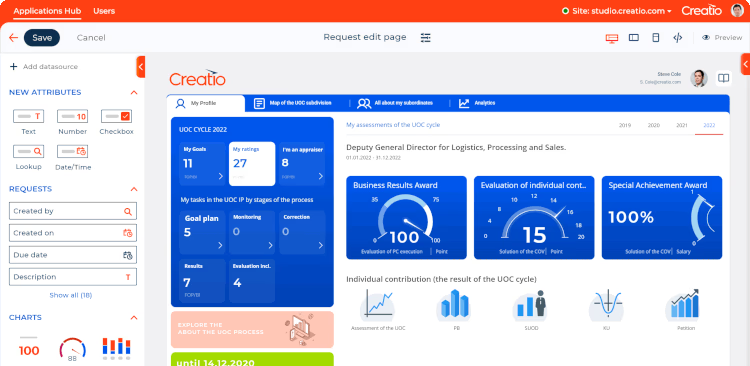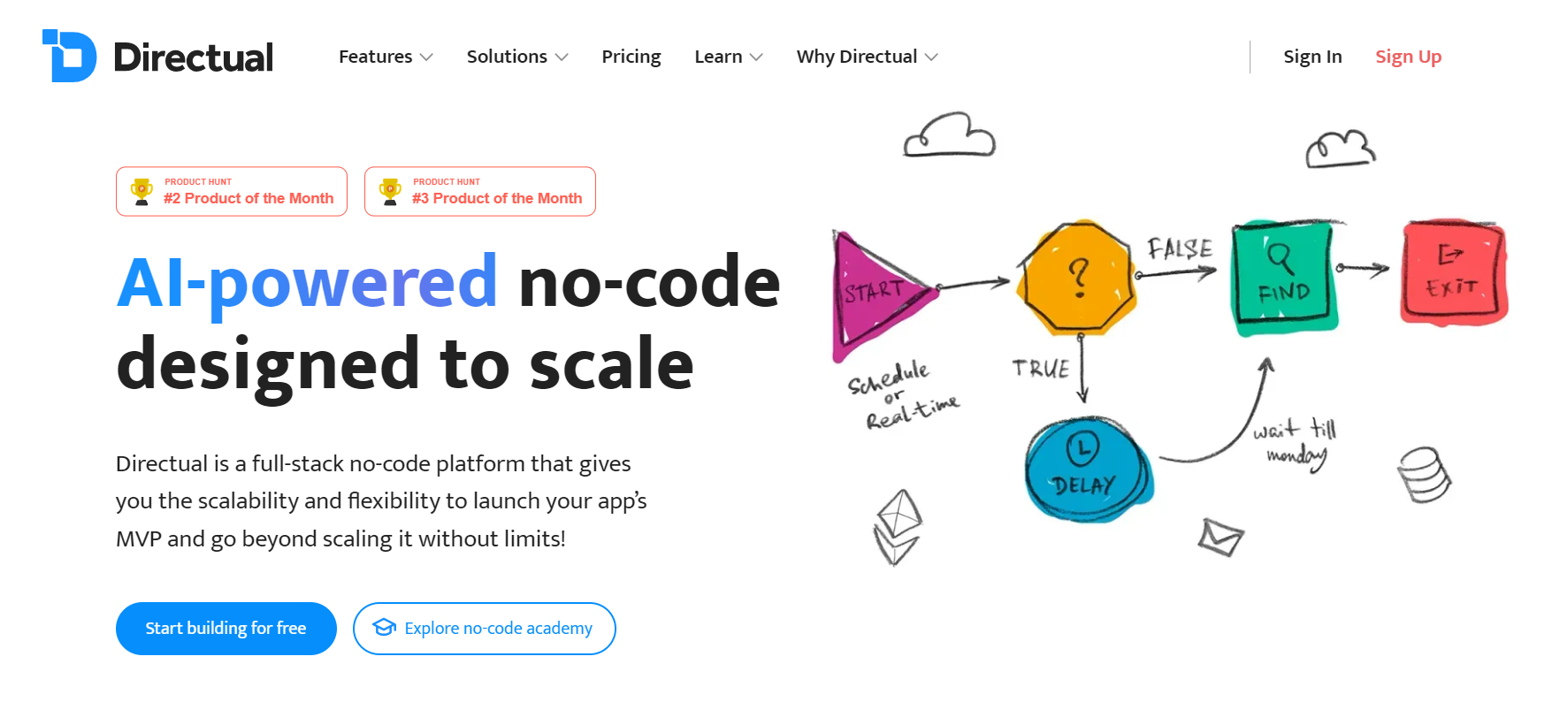How No-Code Devices Simplify Open System Database Development for Everybody
How No-Code Devices Simplify Open System Database Development for Everybody
Blog Article
A Comprehensive Guide to Executing Scalable Databases Without the Requirement for Coding Competence
In the modern landscape of data management, the ability to execute scalable databases without coding competence is coming to be increasingly vital for companies of all sizes. This guide intends to light up the process, focusing on straightforward devices and user-friendly interfaces that debunk data source configuration. By examining essential functions, effective techniques for implementation, and best practices for recurring monitoring, we will certainly resolve just how even non-technical users can confidently browse this facility surface. What are the essential aspects that can genuinely empower these users to utilize scalable data sources successfully? The answers might redefine your technique to data management.
Recognizing Scalable Data Sources
In the realm of modern-day data monitoring, scalable databases have actually become a crucial remedy for organizations looking for to handle boosting volumes of info efficiently. These databases are created to fit growth by enabling the seamless enhancement of resources, whether with straight scaling (including much more equipments) or upright scaling (upgrading existing makers) This versatility is important in today's busy electronic landscape, where data is created at an unprecedented price.
Scalable databases commonly utilize distributed architectures, which make it possible for data to be spread throughout several nodes. This distribution not just enhances performance yet likewise gives redundancy, making certain data accessibility also in case of hardware failures. Scalability can be a critical element for numerous applications, including ecommerce systems, social media sites networks, and big data analytics, where individual demand can vary significantly.
Moreover, scalable data sources usually include durable information uniformity designs that stabilize performance and dependability. Organizations needs to consider their details needs, such as read and create rates, data stability, and fault tolerance when selecting a scalable database solution. Eventually, comprehending the underlying principles of scalable databases is necessary for organizations intending to prosper in a significantly data-driven globe.
Secret Functions to Try To Find
When examining scalable data sources, a number of essential features are critical to ensuring ideal efficiency and integrity. Consider the architecture of the data source. A dispersed style can improve scalability by enabling data to be saved throughout several nodes, helping with seamless data accessibility and handling as demand increases.
An additional critical attribute is data partitioning, which makes it possible for effective management of huge datasets by splitting them into smaller sized, a lot more workable items (no-code). This strategy not only improves efficiency but additionally simplifies resource allocation
Furthermore, search for durable replication capacities. This feature makes certain information redundancy and high availability, decreasing downtime during upkeep or unexpected failings.
Performance tracking devices are additionally crucial, as they provide real-time insights right into system wellness and operational efficiency, permitting for prompt modifications to maintain optimal performance.

User-Friendly Data Source Equipment
Simplicity is an important element in the layout of easy to use data source devices, as it improves ease of access for customers with differing levels of technological competence. no-code. These tools prioritize instinctive interfaces, making it possible for individuals to create, take care of, and inquiry data sources without needing extensive programs like it knowledge
Trick features typically consist of drag-and-drop functionality, visual information modeling, and pre-built design templates that simplify the configuration procedure. Such tools usually provide assisted tutorials or onboarding processes that assist in user involvement and reduce the discovering curve. Furthermore, smooth integration with preferred data resources and solutions guarantees that customers can easily import and export data, better streamlining operations.

In addition, durable support and community sources, such as discussion forums and documentation, improve the user experience by providing help when needed. Overall, straightforward data source tools empower companies to harness the power of scalable databases, making information administration accessible to every person included.
Step-by-Step Application Overview
How can companies efficiently execute scalable databases to meet their expanding go information needs? The process starts with recognizing specific information needs, including the quantity, selection, and rate of data that will be processed. Next, companies must assess user-friendly database tools that offer scalability functions, such as cloud-based options or managed data source solutions.
Once the ideal tool is chosen, the following action involves configuring the data source environment. This includes establishing up circumstances, defining individual approvals, and establishing information structures that line up with organization objectives. Organizations must after that move existing data into the new system, ensuring data stability and marginal disturbance to operations.
Post-migration, carrying out comprehensive testing is critical; this includes efficiency screening under numerous load conditions to ensure the system can deal with future development - no-code. Furthermore, it is essential to train team on the database administration user interface to assist in smooth use
Ideal Practices for Monitoring
Efficient administration of scalable data sources needs a calculated technique that focuses on continuous tracking and optimization. To accomplish this, organizations should implement robust surveillance devices that give real-time understandings right into database performance metrics, such as query feedback times, resource application, and deal throughput. On a regular basis examining these metrics can help determine bottlenecks and areas for renovation.

Routine back-ups and disaster recovery strategies are important to protect information stability and schedule. Developing a routine for examining these backups will certainly make certain a trusted recovery process in case of an unanticipated failure.
Additionally, performance adjusting must be a continuous procedure. Adjusting indexing approaches, optimizing queries, and scaling resourcesâEUR" whether vertically or horizontallyâEUR" will certainly aid preserve optimum efficiency as use needs develop.
Lastly, promoting a society of expertise sharing amongst group participants will certainly enable continuous discovering and adjustment, making sure that the administration of scalable databases remains effective and reliable gradually.
Conclusion
In final thought, the application of scalable data sources can be efficiently accomplished without coding experience via the utilization of user-friendly tools and intuitive user interfaces. By adhering to the laid out approaches for setup, information migration, and efficiency screening, individuals can browse the intricacies of database management easily. Emphasizing ideal techniques for continuous maintenance and collaboration additional enhances the capacity to manage scalable databases successfully in a quickly developing data-driven atmosphere.
In the modern landscape of information monitoring, the ability to implement scalable databases without coding knowledge is ending up being significantly vital for companies of all dimensions.In the realm of contemporary information management, scalable data sources have arised as an important service for organizations looking for to manage raising quantities of info effectively.Moreover, scalable databases typically feature robust data uniformity versions that balance performance and integrity.Just how can organizations successfully implement scalable databases to fulfill their expanding information needs? Next off, organizations ought to review easy to use data source tools that provide scalability functions, such as cloud-based services or managed data source solutions.
Report this page